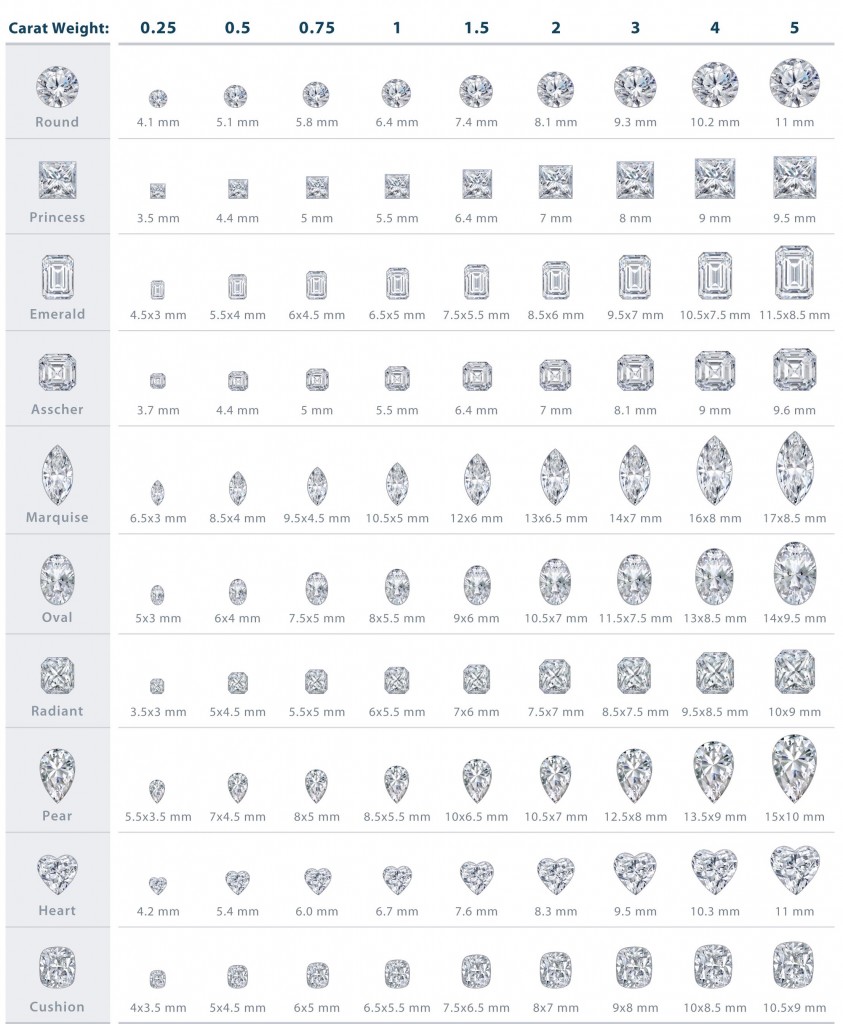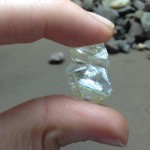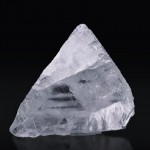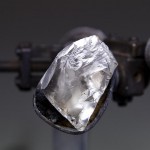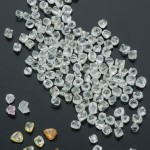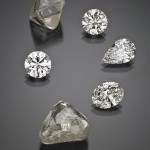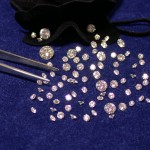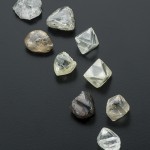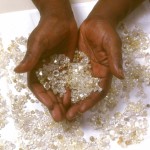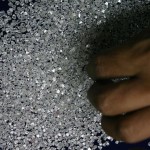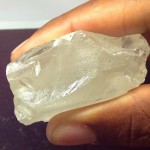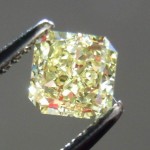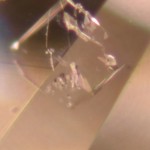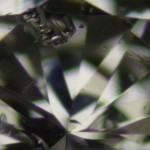Diamonds
Diamonds are beautiful, rare, but also enigmatic. The reactions within the Earth, led to their formation are known in broad terms, but many aspects still remain a mystery.
The diamond is the hardest natural mineral source that is known, but not only has the most extraordinary ability to reflect, refract and diffuse light. They are formed inside the earth at a depth not less than 150 km, where the pressures and temperatures are such as to compress the carbon to such an extent as to form the diamonds. These are then brought to the surface by special volcanic explosions, but during their journey to the top, the rocks that contain diamonds usually crumble.
Features
It is thought that diamonds were first recognized and mined in India, where they were found in alluvial deposits over 6000 years ago, but geologists believe that the formation of most of the diamonds found to date in the face of the earth, have been formed between 1 and 1.6 billion ani ago.
The popularity of diamonds has risen since the nineteenth century, thanks to increased supply, but in particular to the improvement of the techniques of cutting and polishing.
Mines and deposits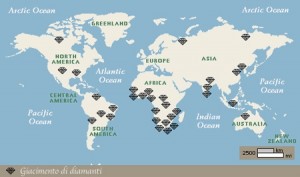
The largest producer of diamonds is undoubtedly Africa, having produced about half of the diamonds in circulation on Earth. It is estimated that the value produced in diamonds only from Africa, is about 158 billion dollars. The market is, however, now changed significantly, and Russia is undermining the primacy Africa, thanks to the recent discovery, in Siberia, the largest field in the world of diamonds.
The diamond deposits have always very small and absolutely vertical, contain a particular rock called “kimberlite”, where the concentration of diamond can reach a concentration of 5 carats per tonne.
The quality
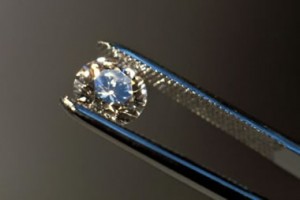 Given the very high value has therefore proved essential to have a measurement system for comparing the multiple, different quality. For this purpose, between the 1940s and 1950s, the GIA (Gemological Institute of America) has developed the “International Diamond Grading System™” and the “4 C”, today adopted worldwide as international classification system.
Given the very high value has therefore proved essential to have a measurement system for comparing the multiple, different quality. For this purpose, between the 1940s and 1950s, the GIA (Gemological Institute of America) has developed the “International Diamond Grading System™” and the “4 C”, today adopted worldwide as international classification system.
Le 4C
Color : the buds completely colorless and transparent are the purest and most precious, and are called “Colorless”, follow the almost colorless or “Near Colorless” and colored or “Slighty Tinted”. Diamonds can take almost all the colors, which are due to impurities or structural defects: the amber and brown are the most common, red, pink and blue are the rarest. It should be noted that the colorless diamonds do not appear to the eye, as the facets reflect the colors of the surrounding environment; as for other gems colorless, moving the colors change quickly (this effect, very intense in diamonds, it is called “spirit” or “fire”).
Before the GIA draw up the scale gradation DZ, there were different assessment systems. Among the other letters of the alphabet (A, B, C) with the multiple of A for the best stones, the system with Arabic numerals (0, 1, 2, 3) or Roman numerals (I, II, III), and also verbal descriptions as “river”, “top wesselton”, “blue gems”, etc.
As the creators of the scale of color gradation GIA wanted to create something completely new, they decided to start their classification with the letter “D” because it had never been used before to define the diamonds of the highest quality.
Clarity : The natural diamonds are the result of exposure to carbon at very high temperatures and pressures, reached only in the great depths of the earth. This process generates diamonds in a great variety of characteristic elements, called “inclusions” when inside the stone, or “spots”, when present on the outer surface.
There are diamonds perfectly pure, but are closest to perfection and the higher the value.
Defects are considered the natural fissures (or “ghiacciature”), traces of incipient flaking and “lines of growth” of the original gem. If a gemologist whereabouts one of these inclusions can define the stone as IF (Internally Flawless) instead of F (Flawless).
Cut : The cut of rough diamonds to turn them into gems jewelery is a very delicate and difficult. Any errors would lead to the loss of large sums of money. The most common form of diamond cut is round, it called brilliant . This term identifies a round cut with minimum 57 facets, to which is added a lower table (not always existing).
Before cutting, the gemologist must take account of the cut shape, the proportions of the cut, the symmetry and defects polishing. The brilliant less than one carat is divided into three categories: “very good” (exceptional brightness or irrelevant defects); “Good” (brightness slightly lower with some elements more visible); “Poor” (poor, with the biggest flaws and / or number).
The widespread use of this cut has led to a misconception: the public tends to identify the terms brilliant and diamondas if they were the same thing. In fact, the term brilliant, if used alone, uniquely identifies a precious stone in round cut. There are many other precious stones that can be cut to bright, such as rubies, sapphires and topaz.
Weight : One carat is exactly equivalent to 0.2 grams, and is the standard unit of measurement of the weight of diamonds and other precious stones, and takes its name from the carob seed that was formerly used as an element of comparison. The carat can be divided into grains equivalent to 1/20 of a gram, and points that are equivalent to 1/100 of a carat.
A parity of other specifications, the value of a diamond increases as the carat weight, since larger diamonds are much harder to find in nature. Precisely for this reason one diamond of a certain weight has a value considerably greater than 2 which, together, have the same carat weight.
In addition, two diamonds of the same weight can have very different values based on the other factors of 4C 3: clarity, color, and cut.
Is finally important to remember that the value of a diamond is determined by using all the 4C, not only the carat weight.
 CRG Italia
CRG Italia 


